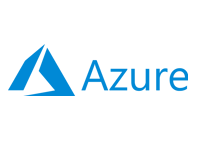On-Demand Data Ingestion Using Serverless-spark

In today's data-driven world, organizations are generating and processing vast amounts
of data in real-time. Managing this data efficiently is crucial, especially when
handling ingestion pipelines that need to scale on demand. Traditional data ingestion
methods often require managing infrastructure, which can lead to over-provisioning,
underutilization, and increased costs. Enter Serverless-spark — an innovation that
simplifies on-demand data ingestion while offering scalability and cost efficiency.
In this article, we’ll explore how on-demand data ingestion using Serverless-spark can
revolutionize your data processing pipelines and the benefits it brings to modern data
architectures.
What is Serverless-spark?
Apache Spark is a powerful distributed computing engine known for its speed and
efficiency in processing large-scale data. Traditionally, Spark requires dedicated
clusters to run its jobs, meaning organizations have to maintain and scale
infrastructure.
Serverless-spark allows you to run Spark jobs without the need for provisioning or
managing the underlying infrastructure. This makes it ideal for workloads with
unpredictable or fluctuating demand, such as data ingestion pipelines.
The Challenge of Traditional Data Ingestion
Data ingestion is the process of importing, transferring, and processing data from
various sources into a centralized data store, such as a data lake or warehouse.
Traditionally, this process involves setting up a data pipeline that continuously
ingests data or triggers ingestion at scheduled intervals. However, these methods
come with challenges:
-
Scalability: Manually scaling infrastructure to handle spikes in data
volume can be complex.
-
Cost Management: Provisioning resources in advance often leads to
over-provisioning, which wastes resources and inflates costs.
-
Infrastructure Maintenance: Managing the infrastructure to run Spark
jobs requires ongoing attention, adding to operational overhead.
On-demand data ingestion powered by Serverless-spark solves these challenges,
providing a more flexible, scalable, and cost-effective solution.
Benefits of On-Demand Data Ingestion Using Serverless-spark
-
Automatic Scaling
One of the key advantages of Serverless-spark is its ability to scale
automatically based on your workload. In an on-demand data ingestion
scenario, this means that Spark can scale up to process large bursts of data
and scale down during periods of lower demand. This automatic scaling
ensures that your ingestion pipelines are always running efficiently,
without the need to manually adjust resources.
For example, if you're ingesting data from IoT devices or social media
feeds, the volume of incoming data can fluctuate greatly. Serverless-spark
will automatically allocate resources during peak times and reduce resource
usage when demand is low, optimizing both performance and cost.
-
Failsafe
Serverless-spark can be deployed across multiple cloud providers using the
code-once, use-everywhere concept, ensuring that critical data jobs remain
efficient, scalable, and failsafe.
-
Cost Efficiency
Serverless-spark operates on an on-demand basis, meaning compute resources
are only utilized during data ingestion. This presents a major advantage
over traditional Spark deployments, where clusters must be provisioned in
advance. With Serverless-spark, there's no need to maintain idle resources
while waiting for data, leading to significant cost savings.
For organizations with unpredictable or bursty data ingestion workloads, the
on-demand nature of Serverless-spark can dramatically reduce infrastructure
costs while ensuring your data pipeline is always ready to handle incoming
data.
-
Simplified Infrastructure Management
Managing Spark clusters, configuring nodes, and ensuring optimal performance
can be time-consuming. Serverless-spark eliminates the need for cluster
management entirely. The underlying infrastructure is automatically managed,
allowing your team to focus on building and maintaining the data pipeline
itself, without the need to worry about the supporting infrastructure.
By leveraging Serverless-spark, your data engineering teams can accelerate
time-to-market for new pipelines, reduce operational overhead, and focus on
optimizing data processes instead of maintaining infrastructure.
-
Flexible Data Source Integration
Serverless-spark seamlessly integrates with a wide range of data sources,
making it an ideal solution for multi-source ingestion. Whether you're
pulling data from streaming sources like Apache Kafka, cloud storage
solutions like Amazon S3 or Azure Blob Storage, or databases,
Serverless-spark can handle ingestion from various data formats and sources.
For example, a retail organization might use Serverless-spark to ingest
real-time transactional data, customer interactions, and product inventories
from various systems across its digital ecosystem. The flexibility of
Serverless-spark allows for smooth integration and processing of data from
multiple origins.
One of the key advantages of Serverless-spark is its ability to scale automatically based on your workload. In an on-demand data ingestion scenario, this means that Spark can scale up to process large bursts of data and scale down during periods of lower demand. This automatic scaling ensures that your ingestion pipelines are always running efficiently, without the need to manually adjust resources. For example, if you're ingesting data from IoT devices or social media feeds, the volume of incoming data can fluctuate greatly. Serverless-spark will automatically allocate resources during peak times and reduce resource usage when demand is low, optimizing both performance and cost.
Serverless-spark can be deployed across multiple cloud providers using the code-once, use-everywhere concept, ensuring that critical data jobs remain efficient, scalable, and failsafe.
Serverless-spark operates on an on-demand basis, meaning compute resources are only utilized during data ingestion. This presents a major advantage over traditional Spark deployments, where clusters must be provisioned in advance. With Serverless-spark, there's no need to maintain idle resources while waiting for data, leading to significant cost savings.
For organizations with unpredictable or bursty data ingestion workloads, the on-demand nature of Serverless-spark can dramatically reduce infrastructure costs while ensuring your data pipeline is always ready to handle incoming data.
Managing Spark clusters, configuring nodes, and ensuring optimal performance can be time-consuming. Serverless-spark eliminates the need for cluster management entirely. The underlying infrastructure is automatically managed, allowing your team to focus on building and maintaining the data pipeline itself, without the need to worry about the supporting infrastructure.
By leveraging Serverless-spark, your data engineering teams can accelerate time-to-market for new pipelines, reduce operational overhead, and focus on optimizing data processes instead of maintaining infrastructure.
Serverless-spark seamlessly integrates with a wide range of data sources, making it an ideal solution for multi-source ingestion. Whether you're pulling data from streaming sources like Apache Kafka, cloud storage solutions like Amazon S3 or Azure Blob Storage, or databases, Serverless-spark can handle ingestion from various data formats and sources.
For example, a retail organization might use Serverless-spark to ingest real-time transactional data, customer interactions, and product inventories from various systems across its digital ecosystem. The flexibility of Serverless-spark allows for smooth integration and processing of data from multiple origins.
How On-Demand Data Ingestion Works with Serverless-spark
Here's a typical flow of how an on-demand data ingestion pipeline using
Serverless-spark might work:
-
Data Source: Data is continuously generated from various sources such
as IoT sensors, mobile apps, social media feeds, or CRM systems.
-
Triggering Spark Jobs: As soon as data becomes available, the system
triggers Serverless-spark jobs on demand. These jobs are automatically
allocated the necessary resources based on the current data volume, even
across multiple cloud providers.
-
Processing & Transformation: Serverless-spark processes and
transforms the data in real-time, preparing it for further analysis or
storage.
-
Data Storage: The processed data is then ingested into a target
storage system, such as a data lake, data warehouse, or database, which can
be a distributed system across multiple cloud providers.
-
Scaling: As data flows increase or decrease, Serverless-spark
dynamically adjusts the computing power needed to handle the workload, even
across multiple cloud providers.
-
Monitoring & Optimization: Built-in monitoring tools can be used to
track resource utilization, performance metrics, and overall efficiency,
allowing for continuous pipeline optimization.
Use Cases for On-Demand Data Ingestion with Serverless-spark
-
Real-Time Analytics
For businesses that rely on real-time insights, such as stock trading
platforms or online retailers, Serverless-spark allows for the continuous
ingestion and processing of streaming data. These organizations can process
huge amounts of data in real-time, automatically scaling up resources as the
volume increases.
-
Batch Data Ingestion
Some organizations may deal with periodic bulk data ingestion—for instance,
nightly batch jobs that process customer transactions or operational data.
Serverless-spark's on-demand nature allows these jobs to run without having
to maintain infrastructure during downtime, reducing costs while ensuring
the job gets done efficiently.
-
IoT Data Processing
IoT systems often generate large volumes of real-time data from sensors and
devices. Serverless-spark allows for efficient ingestion and processing of
this data at scale, making it perfect for industries such as manufacturing,
transportation, and energy, where IoT data is critical for decision-making.
For businesses that rely on real-time insights, such as stock trading platforms or online retailers, Serverless-spark allows for the continuous ingestion and processing of streaming data. These organizations can process huge amounts of data in real-time, automatically scaling up resources as the volume increases.
Some organizations may deal with periodic bulk data ingestion—for instance, nightly batch jobs that process customer transactions or operational data. Serverless-spark's on-demand nature allows these jobs to run without having to maintain infrastructure during downtime, reducing costs while ensuring the job gets done efficiently.
IoT systems often generate large volumes of real-time data from sensors and devices. Serverless-spark allows for efficient ingestion and processing of this data at scale, making it perfect for industries such as manufacturing, transportation, and energy, where IoT data is critical for decision-making.
Conclusion
On-demand data ingestion using Serverless-spark offers a scalable, cost-efficient solution
to handle the growing complexity of modern data pipelines. By removing the need for
infrastructure management, providing automatic Sky Computing scaling, and enabling flexible
data ingestion from multiple sources, Serverless-spark empowers organizations to focus on
what matters most: deriving insights and value from their data.
Whether you're dealing with real-time streaming data, periodic batch jobs, or a multi-source
data environment, Serverless-spark provides the agility and performance you need to succeed
in today's data-centric world.
xcware Strategic Partners





 Follow
us
Follow
us